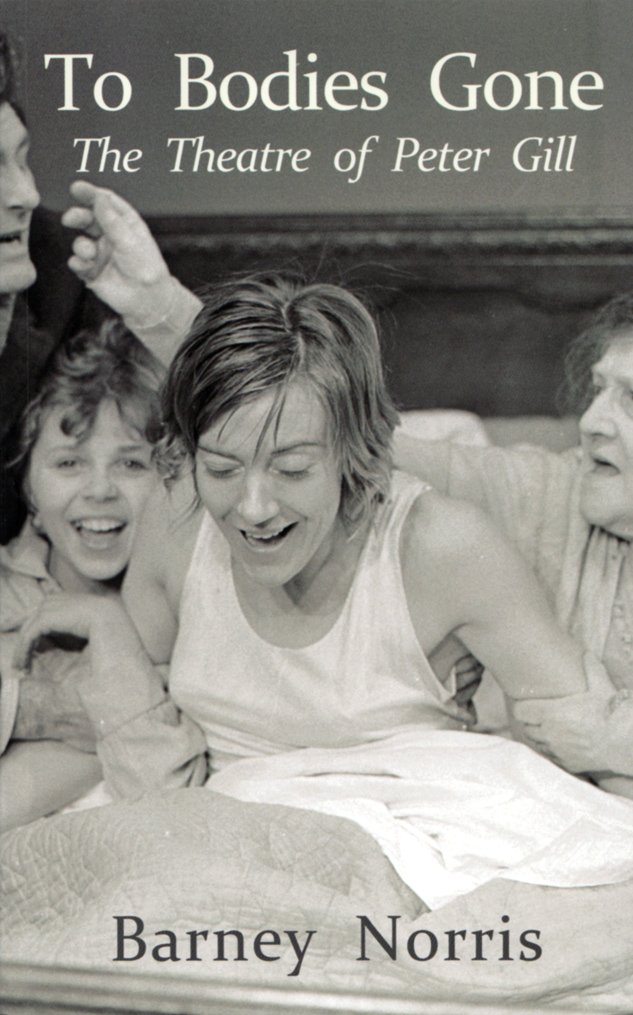 The name Peter Gill does not trip off the tongue nor conjure up a face in the same way that those of Trevor Nunn, Peter Brook, Ronald Eyre or Nicholas Hytner do. Although his substantial body of work as a director certainly is on par with them, he has the edge by the fact that he is an important playwright as well.
The name Peter Gill does not trip off the tongue nor conjure up a face in the same way that those of Trevor Nunn, Peter Brook, Ronald Eyre or Nicholas Hytner do. Although his substantial body of work as a director certainly is on par with them, he has the edge by the fact that he is an important playwright as well.
Gill could, I suppose, be considered in some ways an outsider when mentioned in such illustrious company. He is Welsh – the only Welsh writer performed at the National Theatre, apart from Dylan Thomas – he is from a decidedly working class Cardiff background and did not go to university. Apart from the Welshness, these are all facets shared by two other important go-it-alone writer/directors of his generation – Steven Berkoff and Alan Ayckbourn.
Barney Norris’s book To Bodies Gone, The Theatre of Peter Gill is no dry, academic study/biography. Norris himself is an established and acclaimed young writer and director who knows what he is talking about. It is through his recounting of his discussions with Gill that we discover what makes him tick and how he goes about creating a play. One can’t help thinking that, if not hero worship, there is a great deal of “that’s the way to do it” in Norris’s appraisal of Gill.
Gill, we discover, is very much a pragmatist, seeing directing as a trade rather than an art form and being as much concerned about the angle of a table as the back-story of his leading character. He is quoted as saying, “…all you need to do a play is a couple of chairs, preferably slightly different ones so they look interesting, so that the bodies can make different shapes on stage.”
It is difficult to know whether Gill should be considered primarily a director or a playwright or whether the difference matters. Norris says of his book that it is not intended as a study of a writer, nor a biography nor a piece of literary criticism but rather about a way of seeing, an approach to the world and on the aesthetics of Peter Gill.
Like Berkoff and Ayckbourn, Gill is essentially a man of the theatre who does not draw any lines or put up barriers or demarcation between the creative aspects involved. He conceives his plays, gives birth to them, suckles them, weans them, rears them and then presents them to the world. That is perhaps how it should be – we all know what can happen when you have too many cooks.
For the main part of To Bodies Gone Norris takes us through Gill’s plays, one by one, until an absorbing and revealing portrait of the man emerges. The story is interspersed with fascinating and relevant anecdotes which provide additional insights and entertaining detours along the way.
It is a captivating and thorough piece of work and one can’t help feeling that Norris has a well developed soft spot for his subject and a great deal of admiration for him. And so he should, why would we want to read his book if he didn’t. What Norris documents is, in his own words, “… the heroic project of a man who, over fifty years, has stared at life and offered up the findings of his study.’
Barney Norris is himself a young man of no little talent. He graduated from Keble College, Oxford with a BA (Hons) and received his MA (Hons) from Royal Holloway, University of London. He has worked at various theatres around the country and as assistant to some important directors including David Hare, Michael Frayn and, of course, Peter Gill.
Norris is an associate of Out of Joint and runs his own theatre company, Up In Arms, and I recently reviewed his excellent play Visitors (click here to read that review). Who knows, a few years from now somebody may well be writing a book about Barney Norris himself.
To Bodies Gone, The Theatre of Peter Gill is a comprehensive and enjoyable portrait of one of the great, but slightly unsung, stalwarts of recent British theatre. It should be read by anyone aspiring to be a director, playwright or anyone who is passionate about theatre and craves insight into how plays work. Michael Hasted
- Paperback: 240 pages
- RRP: £14.99
- Publisher: Seren (27 Feb 2014)
- Language: English
- ISBN-10: 1781721815
- ISBN-13: 978-1781721810
- Product Dimensions: 21.4 x 13.6 x 2.2 cm

